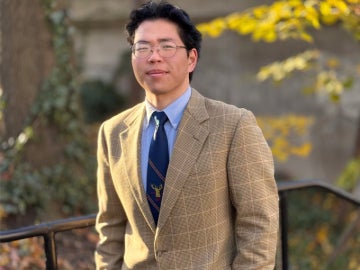A Conservatory Program Emerges in the Space Between Classical and Jazz
September 30, 2016
Erich Burnett

Jazz and classical students in Oberlin’s Performance & Improvisation (PI) program play at the Cat in the Cream Coffeehouse on campus in May 2016. Students audition for roles in PI ensembles after completing prerequisite courses.
Photo credit: Tanya Rosen-Jones '97
Oberlin’s newest ensemble program sits in the space between the conservatory’s classical and jazz worlds and is sending students down intriguing paths toward more innovative artistic expression.
Now in its fourth year, Performance & Improvisation—PI, for short—invites students to deepen their understanding of their own playing through immersive experiences with accomplished guest musicians who represent an exhaustive range of world music styles. Each guest residency consists of one or more master classes with PI students as well as a performance on campus.
Fall semester guests visiting Oberlin in conjunction with the PI program include flamenco pianist Alex Conde (September 28-29), bassist Petros Klampanis (October 25-27), and jazz trumpeter Dominick Farinacci (November 8-10). Spring will feature residencies by jazz clarinet and saxophone player Anat Cohen (February 16-17) and jazz pianist Leo Genovese (March 14-16).
The school year began with an August 31 performance by Under One Sun, a world music collective that features musicians hailing from five countries and five generations, many of whom led master classes the following day. The ensemble was convened by Jamey Haddad, Oberlin’s professor of advanced improvisation and percussion, and his longtime performing partner, saxophonist Billy Drewes.
“Students are truly hungry for experiences that allow them to explore new aspects of music that wouldn’t ordinarily be taught within the repertoire for their instrument,” says Haddad, who founded the Performance & Improvisation program. “The goal of PI is to expand a culture on campus where committed students who want to explore composition and improvisation in an ensemble situation can do so in addition to the focus of their jazz and classical majors.”
The core faculty members behind PI are Haddad, Professor of Jazz Arranging Jay Ashby, and Professor of Jazz Studies and Double Bass Peter Dominguez.
The PI program encompasses coursework, applied lessons, ensembles, and master classes. To be considered for ensemble placement in the PI program, students must first take prerequisite courses: internalizing rhythms I and II (APST 140 and APST 141) and beginning improvisation (for non-jazz musicians) (APST 142). Students are then eligible to audition for one of three small ensembles that receive coachings, access to master classes, and performances both on- and off-campus.
Through their experiences in PI, classical students emerge with confident improvisational skills, and jazz students boast a greater musical vocabulary. Musicians from both backgrounds take away an increased flexibility and adaptability from the experience, along with an emboldened approach to their study and creation of music.
Fourth-year jazz piano and economics major Michael Orenstein has participated in PI since his sophomore year. This fall, he became part of an ensemble that includes a classically trained percussionist; a cellist who also sings and majors in composition; jazz sax, bass, piano, and drum majors; and a violinist who studies both classical and jazz forms.
“The PI program is making a big difference in the way I think about—and hopefully play—music,” says Orenstein, who hails from Berkeley, Calif. “We have artists coming in from all over the world, so we are exposed to different styles of music we probably would not play otherwise. Since I have been in the program, we have had Cuban, Brazilian, Palestinian, Mexican, Israeli, and Venezuelan guest artists. Studying their composition and playing styles has made me a more versatile player and listener.”
Carrie Frey ’14, a violist in New York City, was among the first students to take part in PI at Oberlin.
“The PI program had a very deep influence on my playing and on many of the choices I've made since then,” says Frey, who counts among her numerous ensemble projects a toy piano/toy viola duo that exalts improvisation and performance of original pieces.
“PI gave me the opportunity to view myself as a composer of sorts, the confidence to fit into any ensemble musically and rhythmically, a foundation for later improvisational study, and many important connections that have stayed with me,” says Frey.
Some of those Oberlin connections continue to bear fruit: As a student, Frey performed music by guest artist Petros Klampanis and even shared the stage with the acclaimed bassist. “When I moved to New York City, I reconnected with Petros and was able to jump in with his ensemble, largely because I already knew some of the music and had the solid rhythm I learned from Jamey, Jay, and my fellow PI-mates.”
You may also like…
Nuiko Wadden ’02 Joins Oberlin Conservatory Faculty as Assistant Professor of Harp
The versatile musician brings extensive opera, orchestral, and contemporary music experience to her role
Leo Hidy ’23 Earns 2026 Marshall Scholarship
Leo Hidy ’23, a comparative American studies major who also studied business and economics while at Oberlin, has received a 2026 Marshall Scholarship that will fund two years of graduate study in the UK.
Amy Lee Joins Oberlin Conservatory Faculty as Associate Professor of Violin
The renowned violinist and associate concertmaster of the Cleveland Orchestra brings extensive teaching and performing experience to Oberlin

